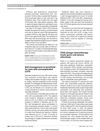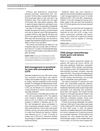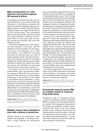Search
forLearn
2 / 2 resultslearn Melatonin
hormone commonly taken for sleep aid has some topical benefits for hair
Research
5 / 1000+ results
research TICE Salvage Chemotherapy Treats Germ-Cell Tumors Effectively
TICE salvage chemotherapy is effective for treating germ-cell tumors with poor prognosis.

research Activation of Wnt Signaling in Hematopoietic Regeneration
Wnt10b helps blood stem cells grow after injury.

research Self-Management Is Beneficial for Men with Uncomplicated Lower Urinary Tract Symptoms
Teaching men with simple bladder problems self-management skills can improve their symptoms and quality of life.

research Role of Liposomal Anthracyclines in the Treatment of Multiple Myeloma
Liposomal anthracyclines are effective and safer for treating multiple myeloma, especially in elderly patients.

research Finasteride Reduces Serum PSA to a Similar Extent at 1 mg and 5 mg Daily Doses
Finasteride lowers PSA levels about the same whether taken at 1 mg or 5 mg daily.
Community Join
5 / 58 results
community Compressed part of research of theory of androgenic/anabolitic balance. AGA h-responders analytic. Theory of physio-metabolitic method of anti AGA treatment
The treatment for androgenetic alopecia involves using finasteride and minoxidil with intense exercise and cold exposure to boost metabolism and reduce androgenic effects, potentially leading to hair regrowth. This approach may activate biological pathways for improved hair and overall health.
community Got a microscope camera. Here’s the difference between healthy and miniaturized hair
A user who shared progress pictures of their scalp using a microscope camera, demonstrating the difference between healthy and miniaturized hair. Various explanations for the cause of this were discussed, such as DHT build-up in scalp sebum causing an autoimmune response leading to inflammation and eventual hair loss, with some suggesting a do-it-yourself treatment involving adding ascorbic acid powder to shampoo.
community UPDATE: The theory that explains everything. Please help me make this big!
Hair loss theory involves 3alpha-hydroxysteroid reductase (3AHD) converting DHT to androstenol. Discussion explores potential treatments and encourages more research.
community How does dutasteride regrowth work?
A 25-year-old man with hair loss from bleach damage is using oral minoxidil and considering adding Dutasteride for better regrowth and prevention. He seeks advice on Dutasteride's effectiveness and potential benefits over finasteride, and is also curious about RU58841.
community The Real Cause Of Androgenetic Alopecia
Androgenetic alopecia is caused by DHT affecting hair growth. Finasteride and minoxidil are used to manage hair loss by blocking DHT and promoting hair growth.